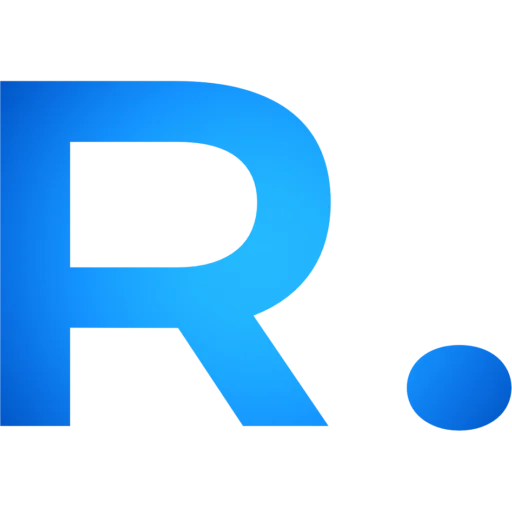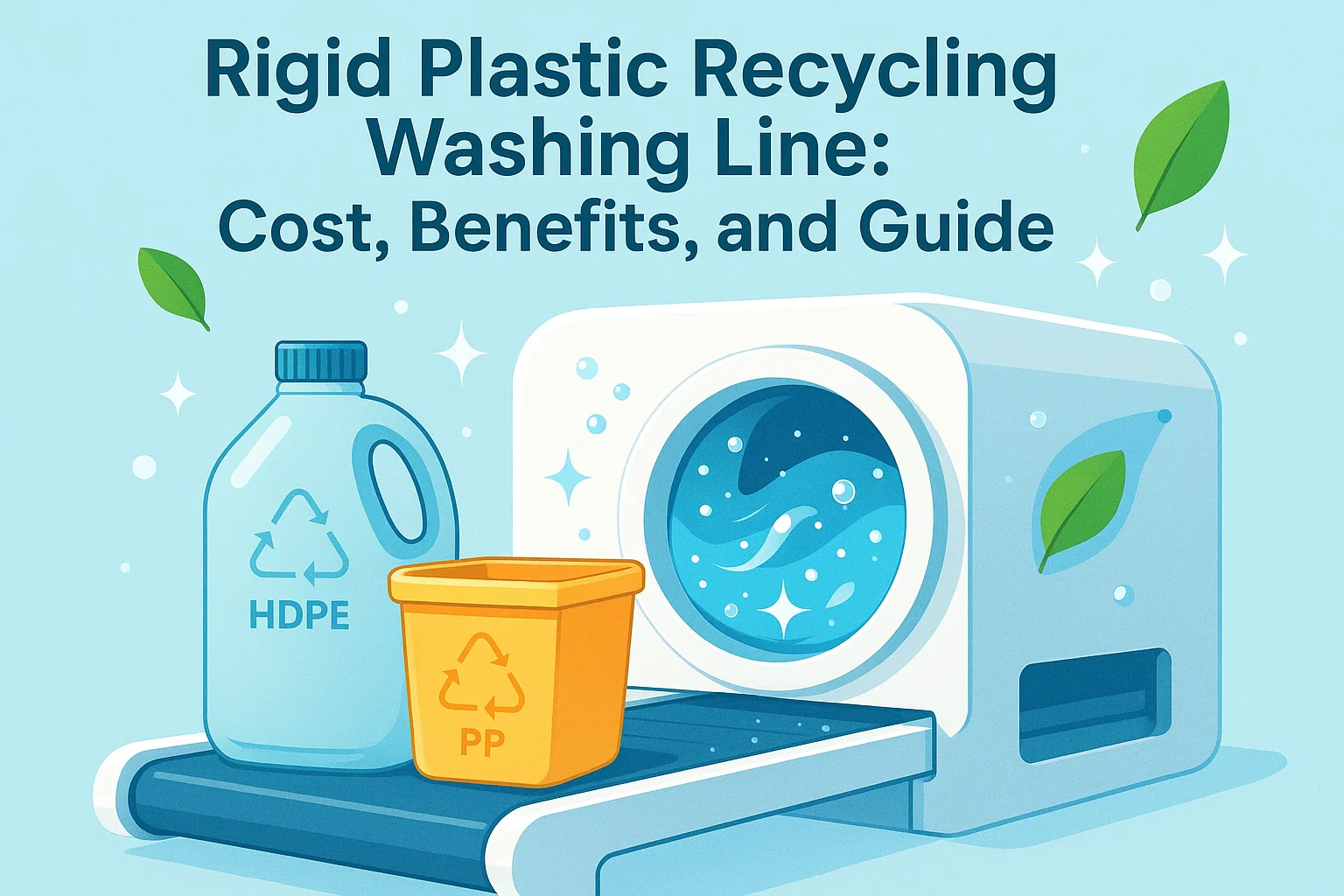مع تزايد أهمية الاستدامة عالميًا، تشهد صناعة إعادة تدوير البلاستيك نموًا سريعًا. بالنسبة للشركات التي تسعى إلى معالجة النفايات البلاستيكية بمسؤولية وربحية، فإن الاستثمار في حبل غسيل إعادة تدوير البلاستيك الصلب قرارٌ مصيري. ولكن ما هي تكلفته، وما الذي يجب أن تتوقعه خلال رحلة الشراء والتشغيل؟ يُفصّل هذا الدليل الشامل كل ما تحتاج لمعرفته - من اختيار المعدات إلى نفقات التشغيل - لتتمكن من القيام باستثمارٍ مُدروس.
ما هو حبل الغسيل البلاستيكي الصلب؟
أ حبل غسيل بلاستيكي صلب نظام متكامل من الآلات مصمم لتنظيف ومعالجة المواد البلاستيكية الصلبة، مثل البولي إيثيلين عالي الكثافة (HDPE) والبولي بروبيلين (PP). تُستخدم هذه المواد البلاستيكية عادةً في مواد مثل الزجاجات والصناديق ومكونات السيارات. تتمثل الوظيفة الرئيسية لحبل الغسيل في إزالة الملوثات وتجهيز البلاستيك لإعادة تدويره وتحويله إلى منتجات جديدة. تشمل المكونات النموذجية آلات التقطيع، وخزانات الغسيل، وغسالات الاحتكاك، وخزانات التعويم، ووحدات التجفيف.
تعرف على المزيد حول التكنولوجيا وراء هذه الأنظمة على موقعنا صفحة حبل الغسيل البلاستيكي الصلب.
العوامل الرئيسية المؤثرة على تكلفة حبل الغسيل البلاستيكي الصلب
هناك عدة عوامل تؤثر على سعر حبل الغسيل البلاستيكي الصلب. فهم هذه العوامل سيساعدك على اختيار التركيب المناسب لاحتياجاتك وميزانيتك.
1. جودة المعدات
الآلات عالية الجودة استثمارٌ في الكفاءة والموثوقية وطول العمر. غالبًا ما تُربط خطوط الإنتاج الأوروبية بجودة تصنيع فائقة، ولكن تتوفر خيارات ممتازة عالميًا من مصنّعين ذوي سمعة طيبة. تذكر أن ارتفاع التكاليف الأولية غالبًا ما يُترجم إلى صيانة أقل وأداء أفضل مع مرور الوقت.
2. القدرة
تُحدد أحجام حبال الغسيل وفقًا للإنتاجية، والتي تُقاس عادةً بالكيلوغرام في الساعة. الأنظمة الأصغر، المثالية للشركات الناشئة أو الصغيرة، قد تتحمل 500 كيلوغرام في الساعة. أما العمليات الأكبر فقد تتطلب حبال غسيل قادرة على تحمل أكثر من 2000 كيلوغرام في الساعة. كلما زادت السعة، ارتفع السعر.
3. التخصيص
كل عملية إعادة تدوير فريدة من نوعها. يمكن تصميم حبال الغسيل المُصممة خصيصًا لمعالجة أنواع محددة من البلاستيك أو معالجة مستويات متفاوتة من التلوث. قد يزيد التخصيص من التكاليف، ولكنه يضمن أن نظامك يلبي متطلباتك بدقة.
4. ميزات إضافية
يمكن للميزات المتقدمة، مثل المراقبة الآلية، والمحركات الموفرة للطاقة، وأنظمة إعادة تدوير المياه، أن تعزز الاستثمار الأولي، لكنها تُخفّض تكاليف التشغيل المستمرة. تُحسّن هذه التحسينات الكفاءة، وتُقلّل الهدر، وتُوفّر وفورات كبيرة على المدى الطويل.
أنواع حبال الغسيل البلاستيكية الصلبة
تتطلب الشركات المختلفة حلولاً مختلفة. إليك نظرة على الأنواع الأكثر شيوعًا:
حبل الغسيل البلاستيكي الصلب الأساسي
مثالي للمبتدئين، يتضمن هذا النظام عادةً آلة تمزيق، وخزان غسيل، وغسالة احتكاك، ومجفف. يغطي المراحل الأساسية للتنظيف والمعالجة الفعالين بسعر مناسب للمبتدئين.
خط غسيل البلاستيك الصلب المتقدم
تقدم الخطوط المتقدمة مراحل تنظيف وتجفيف إضافية - مثل الغسالات الساخنة للتلوث العنيد أو خزانات الغسيل الثانوية - للعمليات التي تتطلب إنتاجًا معاد تدويره عالي النقاء.
خط غسيل بلاستيكي صلب مخصص
صُممت خطوط الإنتاج القابلة للتخصيص بالكامل لتلبية تحديات فريدة، مثل إزالة الملوثات الخاصة أو معالجة المواد البلاستيكية الصلبة غير الشائعة. وغالبًا ما تتميز هذه الخطوط بآلات تقطيع متخصصة، أو معالجة مياه متكاملة، أو أتمتة مُحسّنة.
نطاق السعر: ما هو المبلغ الذي يجب أن تتوقع دفعه؟
على الرغم من أن الأسعار تختلف حسب التكوين، فإليك دليل عام:
- حبل الغسيل البلاستيكي الصلب الأساسي: $50,000 – $150,000
- خط غسيل البلاستيك الصلب المتقدم: $150,000 – $300,000
- خط غسيل بلاستيكي صلب مخصص:$300,000 وما فوق
قد تتقلب هذه الأرقام تبعًا للمورد والمنطقة والخيارات المتاحة. مع أن الاستثمار قد يبدو كبيرًا، إلا أن العديد من الشركات تجد أن الفوائد طويلة الأجل وعائد الاستثمار يستحقان ذلك.
تكاليف التشغيل المستمرة
بالإضافة إلى عملية الشراء الأولية، ضع في اعتبارك النفقات المتكررة التالية:
استهلاك الطاقة
يتطلب تشغيل حبل الغسيل طاقة كبيرة. ورغم أن الطُرز الموفرة للطاقة قد تكون أسعارها أعلى، إلا أنها تُخفّض فواتير الخدمات الشهرية وتُقدّم فوائد بيئية.
صيانة
الصيانة الدورية أساسية لزيادة مدة التشغيل وإطالة عمر المعدات. خطط لإجراء فحوصات دورية، واستبدال قطع الغيار، وخدمات الصيانة الاحترافية من حين لآخر.
تَعَب
يُعدّ وجود مشغلين ماهرين أمرًا أساسيًا لضمان كفاءة خطوط إعادة التدوير. وسيساعد الاستثمار في تدريب الموظفين وإدارة سير العمل بكفاءة على إبقاء تكاليف العمالة في حدودها المعقولة.
التخلص من النفايات
يُعدّ التعامل السليم مع الملوثات والمواد غير القابلة لإعادة التدوير والتخلص منها ضرورةً تنظيميةً وبيئيةً. ضع هذه التكاليف في الحسبان عند وضع ميزانية عملية إعادة التدوير.
تعظيم عائد الاستثمار (ROI)
أ حبل غسيل بلاستيكي صلب يمكن تحقيق عائد استثمار قوي باتباع الاستراتيجية الصحيحة. إليك بعض أفضل الممارسات:
تحليل السوق
ابحث عن الطلب المحلي على البلاستيك الصلب المُعاد تدويره. بناء علاقات مع المشترين وتأمين العقود سيضمن تدفقًا ثابتًا للإيرادات.
ضبط الجودة
الإنتاج المتسق والعالي الجودة يبني ثقة العملاء وولائهم. طبّقوا رقابة جودة صارمة في كل مرحلة من مراحل العملية.
عمليات فعالة
تحسين العمليات لتقليل الهدر إلى أدنى حدّ وتحقيق أقصى كفاءة للطاقة. تحسينات العمليات المستمرة تُعزز الإنتاجية والأرباح.
التأثير البيئي
إن تعزيز المساهمات البيئية الإيجابية لشركتك يمكن أن يعزز علامتك التجارية ويفتح الأبواب أمام العملاء والشركاء المهتمين بالبيئة.
نظرة عن كثب: عملية غسل البلاستيك الصلب
فيما يلي نظرة عامة خطوة بخطوة حول كيفية تحويل هذه الأنظمة للنفايات البلاستيكية:
1. التقطيع
يتم تقطيع النفايات البلاستيكية إلى قطع أصغر، مما يجعل تنظيفها ومعالجتها أسهل.
2. الغسيل
تتم إزالة الملصقات والأوساخ والزيوت من خلال مراحل الغسيل المتعددة - بما في ذلك الخزانات وغسالات الاحتكاك والغسالات الساخنة - لضمان الحصول على رقائق نقية وخالية من الملوثات.
3. التجفيف
تعمل وحدات التجفيف القوية على تقليل الرطوبة، وتجهيز رقائق البلاستيك لمزيد من المعالجة أو البيع المباشر.
4. الفرز
قد تتضمن الخطوط المتقدمة الفرز الآلي حسب نوع البلاستيك أو لونه، مما يعزز جودة وقيمة المنتج المعاد تدويره في السوق.
5. التكوير (اختياري)
وتضيف بعض العمليات مرحلة التكوير، لتحويل الرقائق النظيفة إلى حبيبات موحدة لجذب سوق أوسع.
الأسئلة الشائعة
س: ما هي أنواع البلاستيك التي يمكن معالجتها؟
أ: تم تصميم معظم الخطوط للاستخدام مع البولي إيثيلين عالي الكثافة والبولي بروبيلين وغيرها من المواد البلاستيكية الصلبة مثل الصناديق والزجاجات وأجزاء السيارات.
س: كم من الوقت يستغرق الإعداد؟
أ: تختلف أوقات الإعداد حسب التعقيد، ولكن من المتوقع أن تستغرق عدة أسابيع إلى بضعة أشهر من الطلب حتى الاستعداد التشغيلي.
س: ما هي اللوائح التي يجب أن آخذها في الاعتبار؟
أ: يعد الالتزام باللوائح البيئية المحلية والدولية أمرًا ضروريًا - خاصة فيما يتعلق بالتخلص من النفايات واستخدام الطاقة.
س: هل يمكنني ترقية خطي الحالي؟
أ: تقدم العديد من الشركات المصنعة مجموعات ترقية لتحسين الكفاءة، أو تعزيز السعة، أو تلبية اللوائح الجديدة.
س: ما هو عمر حبل الغسيل؟
أ: مع الرعاية المناسبة، يمكن لخط عالي الجودة أن يعمل بكفاءة لأكثر من 10 سنوات.
س: هل خيارات التمويل متاحة؟
أ: نعم! يُقدّم العديد من المُورّدين تمويلًا لتسهيل الوصول إلى هذه الأنظمة.
خاتمة
أ حبل غسيل إعادة تدوير البلاستيك الصلب يُعدّ استثمارًا ذكيًا لأي شركة تُركّز على الاستدامة والربحية والامتثال. من خلال فهم العوامل المؤثرة على التكلفة والاحتياجات التشغيلية وعائد الاستثمار المُحتمل، يُمكنك اختيار النظام المُناسب لاحتياجاتك ووضع عملك في مسار النجاح على المدى الطويل. إذا كنت مُستعدًا لاتخاذ الخطوة التالية أو ترغب في الحصول على إرشادات من الخبراء، فاستكشف... حلول حبال الغسيل البلاستيكية الصلبة اليوم.



